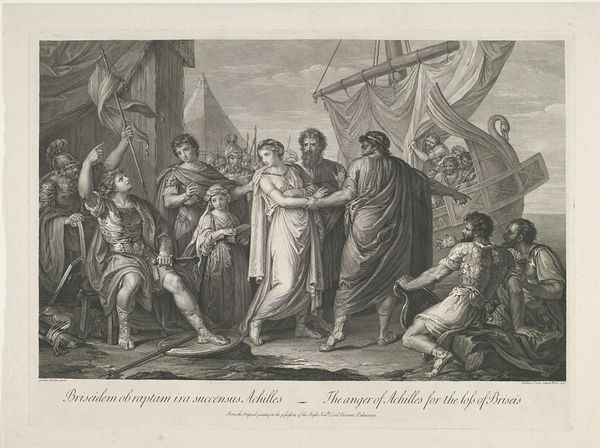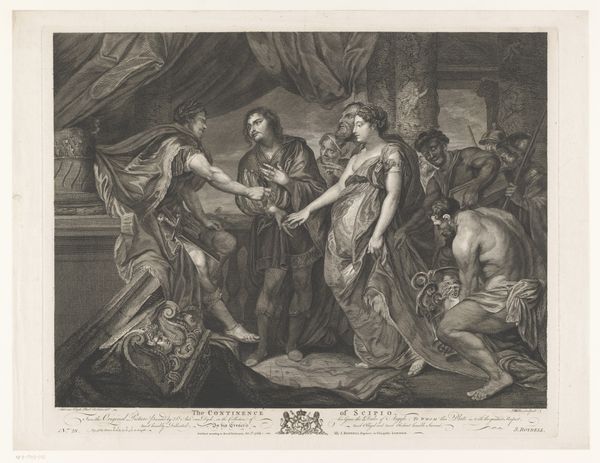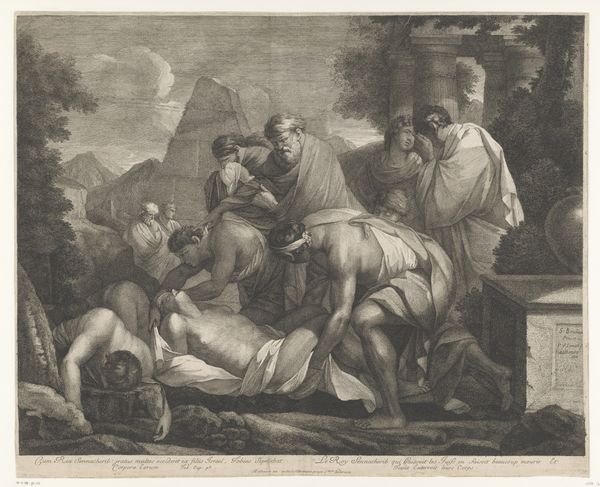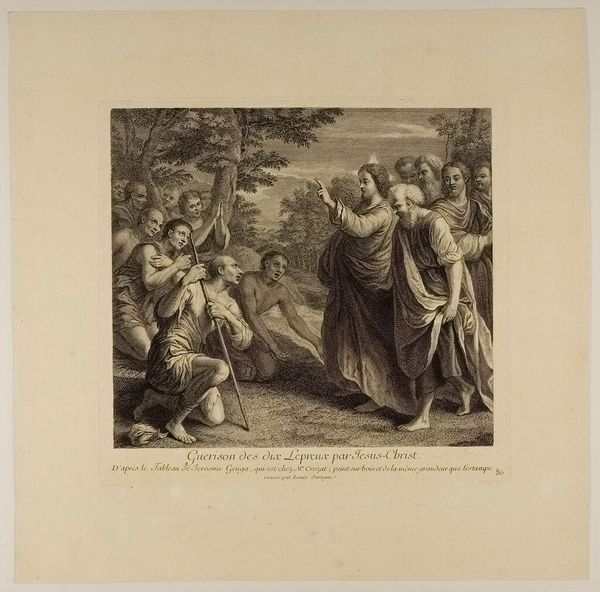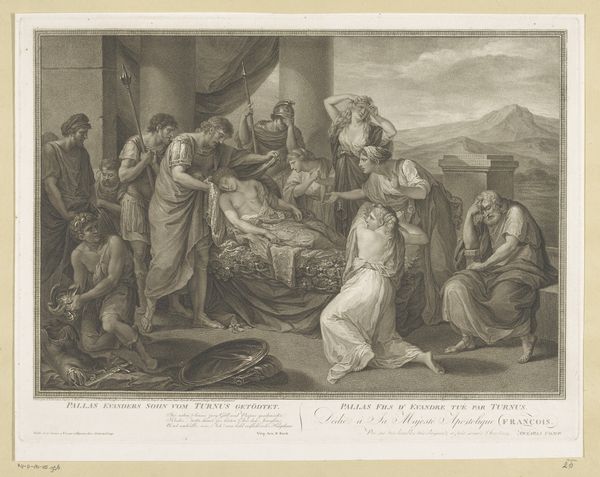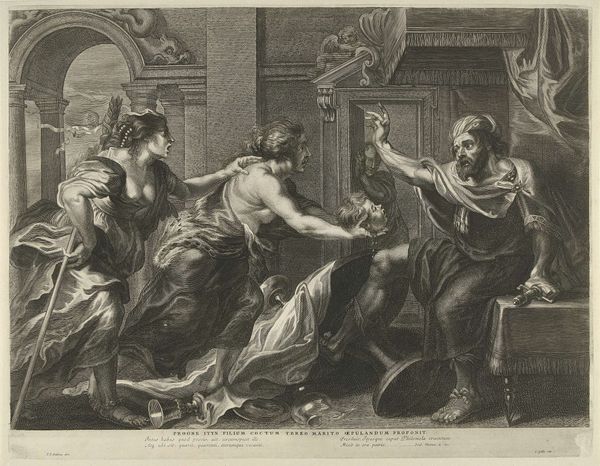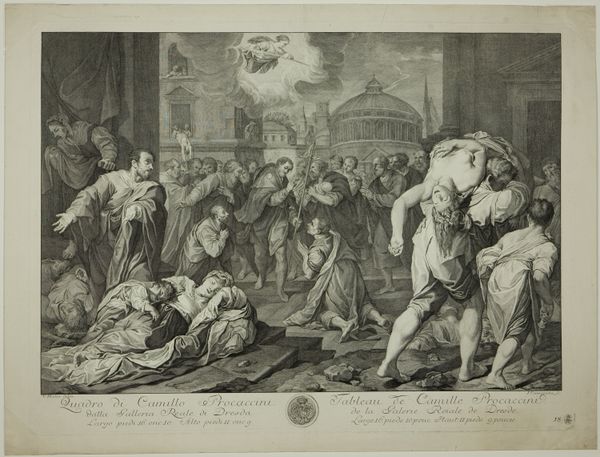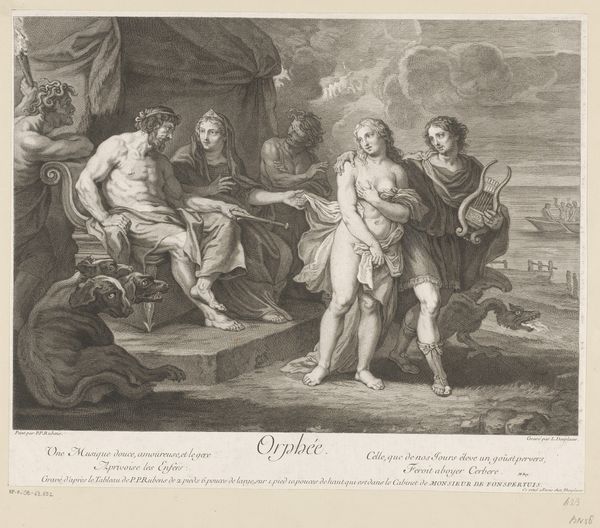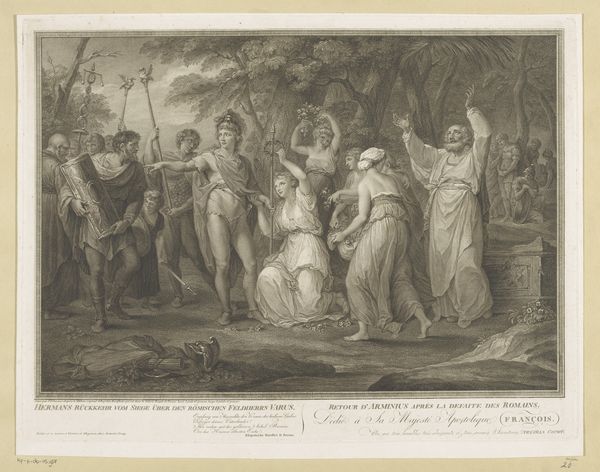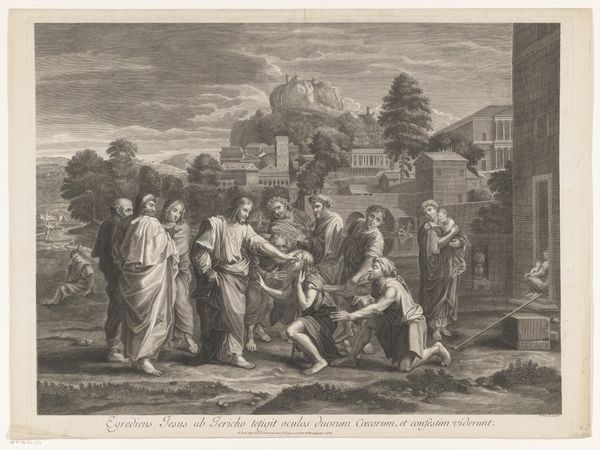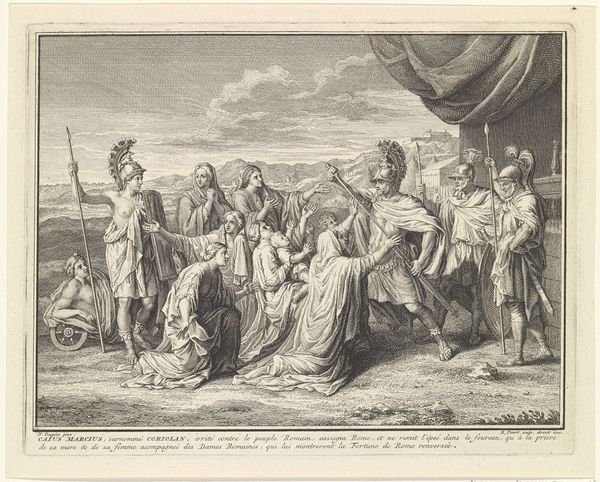
Eteocles en Polynices, door hun moeder Jocaste tot vrede vermaand. 1774
0:00
0:00
print, engraving
#
neoclacissism
# print
#
classical-realism
#
figuration
#
portrait reference
#
portrait drawing
#
history-painting
#
engraving
Dimensions: height 428 mm, width 590 mm
Copyright: Rijks Museum: Open Domain
Editor: Here we have Pieter Franciscus Martenasie’s 1774 engraving, "Eteocles en Polynices, door hun moeder Jocaste tot vrede vermaand" or "Eteocles and Polynices, Their Mother Jocasta Urging Them to Peace". The composition feels very staged and theatrical, but the expressions on the figures' faces are compelling. What do you see in this piece? Curator: What immediately strikes me is how this image, seemingly about familial reconciliation, operates within a complex web of power, gender, and historical interpretation. Neoclassicism, the art movement to which this work belongs, often served as a visual language for the elite, reinforcing their values through carefully constructed narratives. How do we interpret Jocasta’s role here? Is she a peacemaker or a pawn in a larger political game played by men? Editor: I hadn’t thought about that. I was focused on her gesture, the way she seems to be pleading with her sons. Is Martenasie suggesting something about women’s roles in preventing conflict? Curator: Perhaps. But we need to consider the limitations placed upon women in 18th-century society. Jocasta’s agency is already circumscribed by her position as a mother and wife. The image presents a classical ideal, but classical ideals also carry heavy baggage regarding the subjugation of women and the justification of social hierarchies. Is Martenasie critiquing those roles, or is he reinforcing them? That ambiguity, for me, is where the image becomes truly engaging. Do you think the artist consciously questioned those roles? Editor: It's hard to say definitively, but considering those layers definitely gives me a richer appreciation for the piece. Thanks! Curator: Absolutely. Considering the power dynamics is how we move past simple aesthetic appreciation towards a deeper understanding of the artwork.
Comments
No comments
Be the first to comment and join the conversation on the ultimate creative platform.
